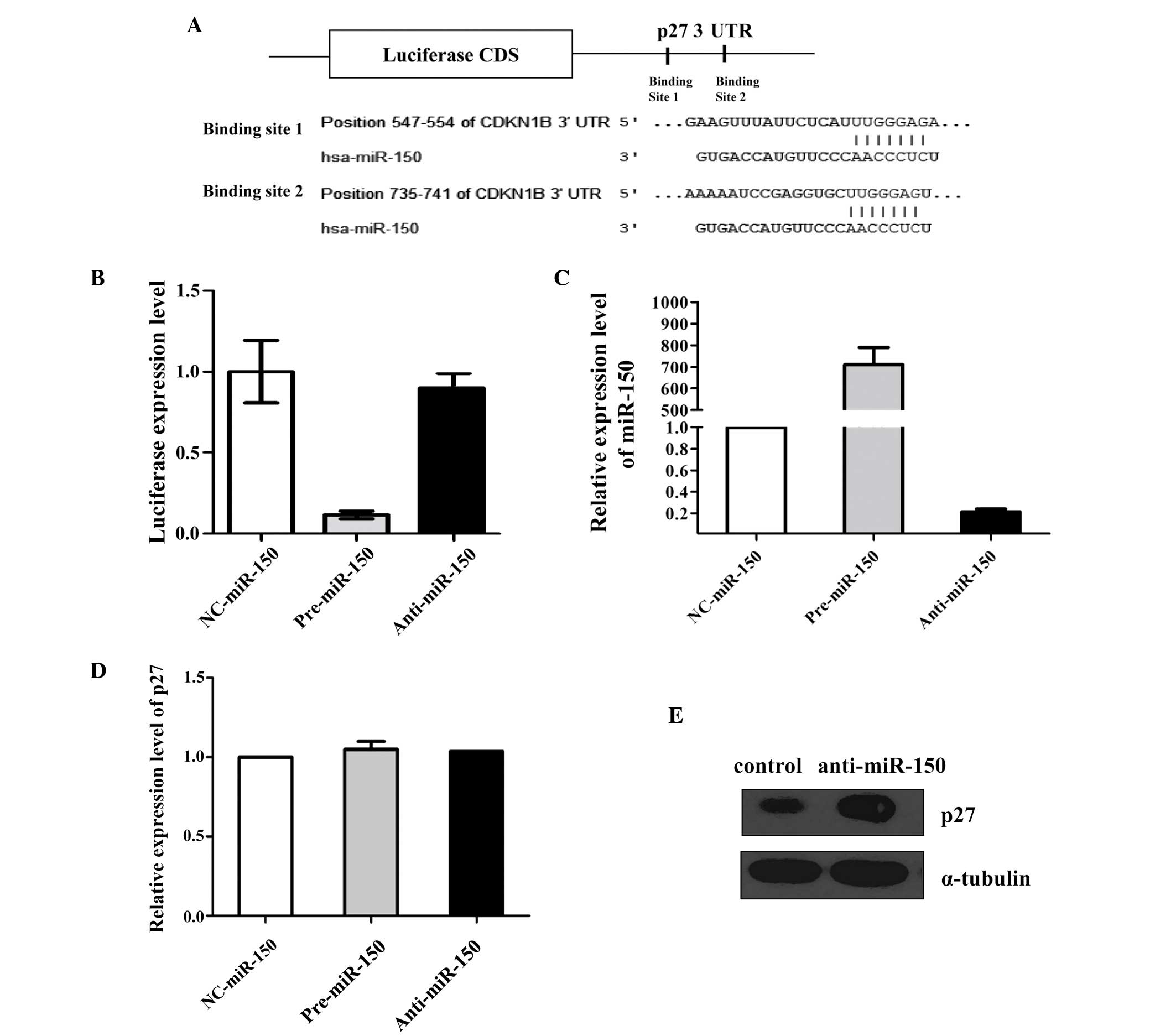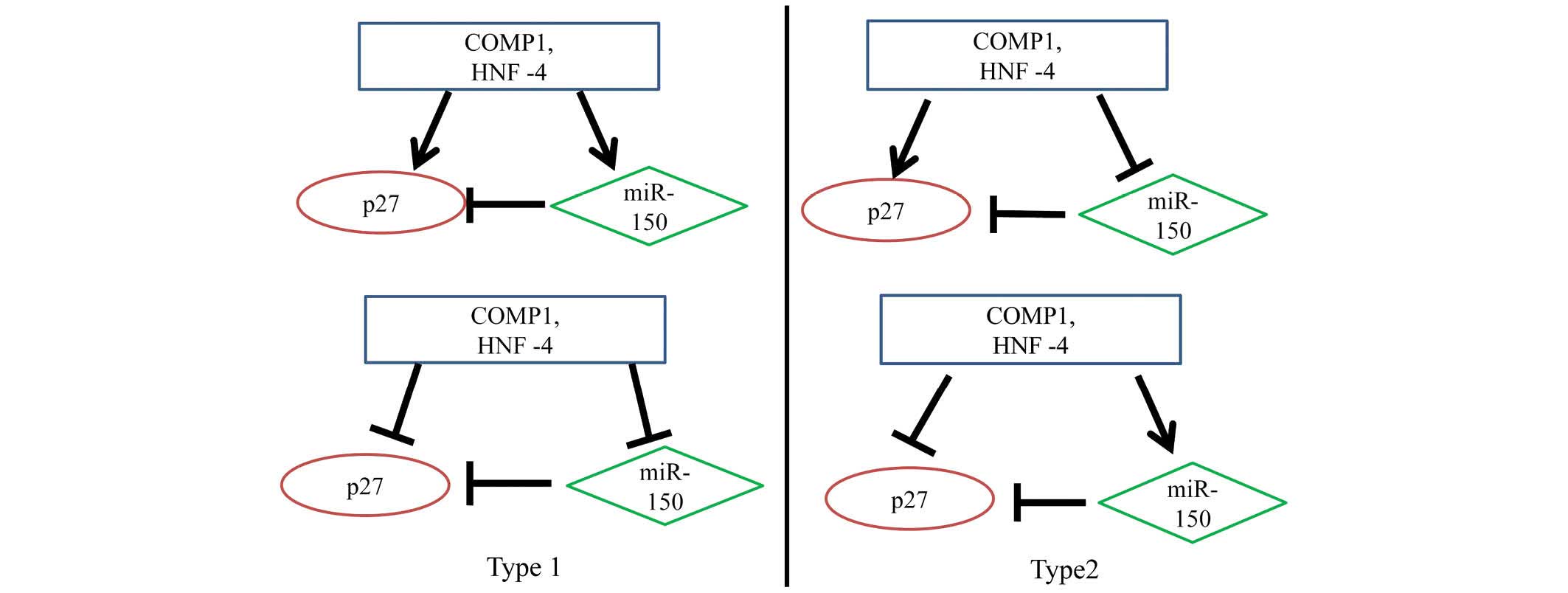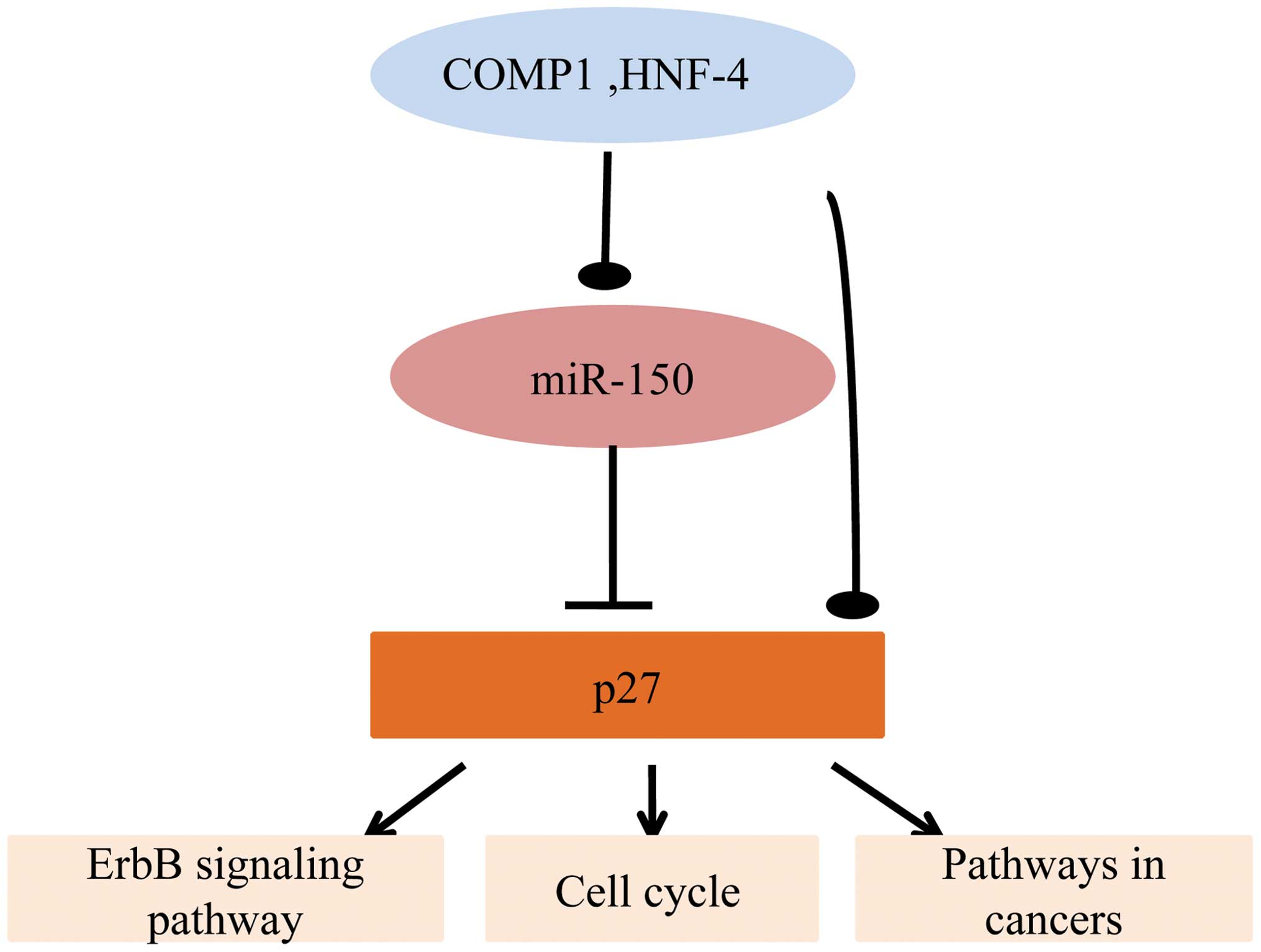The regulatory loop of COMP1 and HNF‑4‑miR‑150‑p27 in various signaling pathways
- Authors:
- Weiwei Nie
- Jun Gu
- Zexing Wang
- Donghai Li
- Xiaoxiang Guan
-
View Affiliations
Affiliations: Department of Medical Oncology, Jinling Hospital, Southern Medical University, Guangzhou, Guangdong 510282, P.R. China, Department of Extramammary, Jinling Hospital, Medical School of Nanjing University, Nanjing, Jiangsu 210002, P.R. China, Department of Medical Oncology, Jinling Hospital, Medical School of Nanjing University, Nanjing, Jiangsu 210002, P.R. China, Jiangsu Engineering Research Center for MicroRNA Biology and Biotechnology, State Key Laboratory of Pharmaceutical Biotechnology, School of Life Sciences, Nanjing University, Nanjing, Jiangsu 210093, P.R. China
- Published online on: October 27, 2014 https://doi.org/10.3892/ol.2014.2643
-
Pages:
195-200
Metrics:
Total
Views: 0 (Spandidos Publications: | PMC Statistics:
)
Metrics:
Total PDF Downloads: 0 (Spandidos Publications: | PMC Statistics:
)
This article is mentioned in:
Abstract
MicroRNAs (miRNAs) are short regulatory RNAs that negatively modulate protein expression at the post‑transcriptional level. Additionally, they have been associated with the pathogenesis of a number of types of cancer. In the current study, two target sites for miR‑150 were determined within the 3'‑untranslated region of p27Kip1 (hereafter referred to as p27) mRNA, and it was determined that ectopic overexpression of miR‑150 led directly to p27 downregulation in cancer cells. These findings indicate that miR‑150 may be a novel regulator of p27 expression. In the databases of the University of California, Santa Cruz (UCSC) and Match online, two common transcription factors were identified for miR‑150 and p27: Cooperates with myogenic proteins 1 (COMP1) and hepatocyte nuclear factor‑4 (HNF‑4). Using the Database for Annotation, Visualization, and Integrated Discovery (DAVID), it was determined that p27 is involved in pathways regulated by the target genes of miR‑150. Therefore, these results suggest that there may be a regulatory loop between COMP1 and HNF‑4‑miR‑150‑p27. Additional functional studies are required to understand the molecular basis for the formation of this circuit loop, and provide an insight into the development of innovative therapies targeting specific tumor markers.
View References
|
1
|
Esquela-Kerscher A and Slack FJ:
Oncomirs-microRNAs with a role in cancer. Nat Rev Cancer.
6:259–269. 2006. View
Article : Google Scholar : PubMed/NCBI
|
|
2
|
Lee YS and Dutta A: MicroRNAs in cancer.
Annu Rev Pathol. 4:199–227. 2009. View Article : Google Scholar :
|
|
3
|
Chu IM, Hengst L and Slingerland JM: The
Cdk inhibitor p27 in human cancer: prognostic potential and
relevance to anticancer therapy. Nat Rev Cancer. 8:253–267. 2008.
View Article : Google Scholar : PubMed/NCBI
|
|
4
|
le Sage C, Nagel R and Agami R: Diverse
ways to control p27Kip1 function: miRNAs come into play. Cell
Cycle. 6:2742–2749. 2007. View Article : Google Scholar : PubMed/NCBI
|
|
5
|
Watanabe A, Tagawa H, Yamashita J, Teshima
K, Nara M, Iwamoto K, Kume M, Kameoka Y, Takahashi N, Nakagawa T,
Shimizu N and Sawada K: The role of microRNA-150 as a tumor
suppressor in malignant lymphoma. Leukemia. 25:1324–1334. 2011.
View Article : Google Scholar : PubMed/NCBI
|
|
6
|
Chen C, Ridzon DA, Broomer AJ, Zhou Z, Lee
DH, Nguyen JT, Barbisin M, Xu NL, Mahuvakar VR, Andersen MR, Lao
KQ, Livak KJ and Guegler KJ: Real-time quantification of microRNAs
by stem-loop RT-PCR. Nucleic Acids Res. 33:e1792005. View Article : Google Scholar : PubMed/NCBI
|
|
7
|
Schmittgen TD, Jiang J, Liu Q and Yang L:
A high-throughput method to monitor the expression of microRNA
precursors. Nucleic Acids Res. 32:e432004. View Article : Google Scholar : PubMed/NCBI
|
|
8
|
Edelstein LC and Bray PF: MicroRNAs in
platelet production and activation. Blood. 117:5289–5296. 2011.
View Article : Google Scholar : PubMed/NCBI
|
|
9
|
Hornstein E and Shomron N: Canalization of
development by microRNAs. Nat Genet. 38:S20–S24. 2006. View Article : Google Scholar : PubMed/NCBI
|
|
10
|
Tsang J, Zhu J and van Oudenaarden A:
MicroRNA-mediated feedback and feedforward loops are recurrent
network motifs in mammals. Mol Cell. 26:753–767. 2007. View Article : Google Scholar : PubMed/NCBI
|
|
11
|
Chu I, Sun J, Arnaout A, Kahn H, Hanna W,
Narod S, Sun P, Tan CK, Hengst L and Slingerland J: p27
phosphorylation by Src regulates inhibition of cyclin E-Cdk2. Cell.
128:281–294. 2007. View Article : Google Scholar : PubMed/NCBI
|
|
12
|
Haag A: A trip of a lifetime. Nature.
435:1018–1020. 2005. View
Article : Google Scholar : PubMed/NCBI
|
|
13
|
Meltzer PS: Cancer genomics: small RNAs
with big impacts. Nature. 435:745–746. 2005. View Article : Google Scholar : PubMed/NCBI
|
|
14
|
Elnitski L, Jin VX, Farnham PJ and Jones
SJ: Locating mammalian transcription factor binding sites: a survey
of computational and experimental techniques. Genome Res.
16:1455–1464. 2006. View Article : Google Scholar : PubMed/NCBI
|
|
15
|
Re A, Corá D, Taverna D and Caselle M:
Genome-wide survey of microRNA-transcription factor feed-forward
regulatory circuits in human. Mol Biosyst. 5:854–867. 2009.
View Article : Google Scholar : PubMed/NCBI
|













